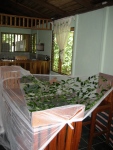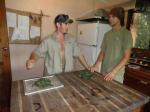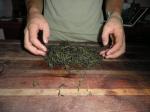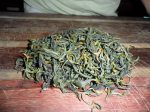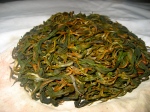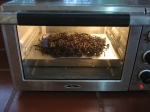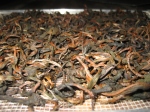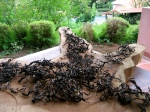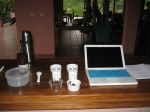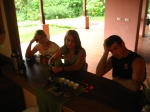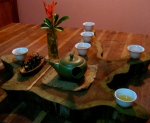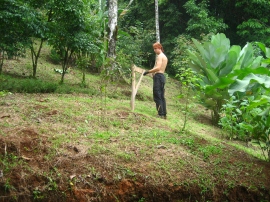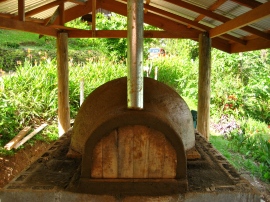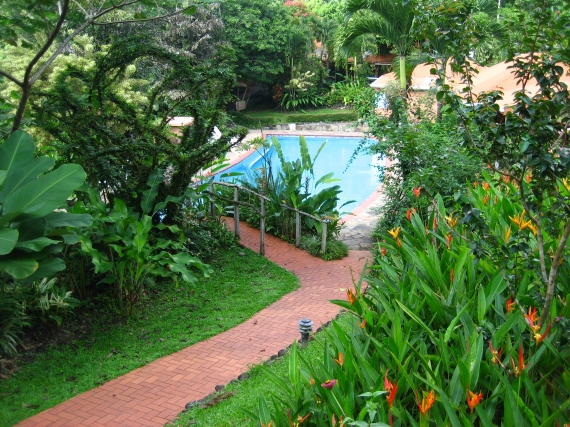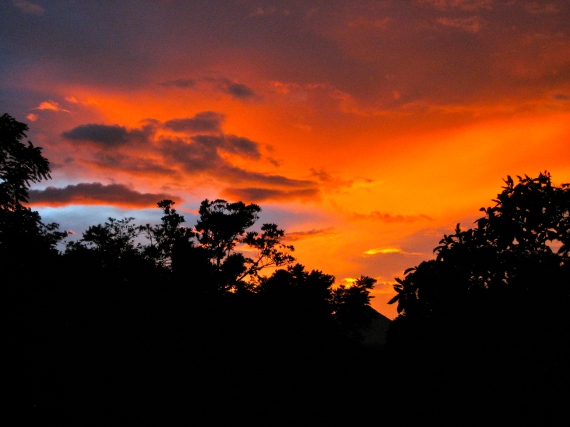- Indoor withering (in the intern house) of our Biodynamic Organic Black tea at Finca Luna Nueva in Costa Rica.
- Austin, looking like he’s going to punch me, but were really just making tea… :)
- Hand rolling/massaging our black tea
- After about an hour of hand rolling
- Hand rolling/massage our black tea.
- 1.5 hours of hand rolling
- The effect of oxidation after a few hours
- de-enzyming to halt oxidation and stabilize the tea.
- ready to be dehydrated
- dehydrating
- dehydrating
- finished product out on the cat-walk
- ready for the inaugural cupping!
- FLN interns eager for another brew
- Finca Luna Nueva themed tea ceremony
In preparation for our Black Tea workshop** in October, we made Finca Luna Nueva’s first Biodynamic Organic Black Tea last week. (It should really be called a Red tea, but for the sake of simplicity and parlance, we’ll refer to it as Black Tea)
This harvest gave me a chance to put all of my previously learned tea knowledge to the test. Reflecting back on my experiences in Hawaii and Taiwan working on tea farms and in tea factories, and simply listening to the tea plants — as is so important to Biodynamics and the Way of Tea — I put together a simple processing method including indoor withering, hand rolling, de-enzyming, and drying.
When working with such high quality and high vibrational raw material, it’s tough to go wrong. These plants have been propagated from seeds that stem from tea trees ranging between 20 – 40 ft tall here at Finca Luna Nueva. Their root systems tap deep into the riches of the soil, drawing on nutrients and energy not available to younger tea evergreens. Those deep-rooted resources, combined with the intention and benefit received from biodynamic practices, lay the foundation for a materially and spiritually rich tea garden. Que Rico.
We harvested the tea on a mid-afternoon Fruit day during the ascending and waxing phase of the moon according to Stella Natura’s Biodynamic Calendar – 2012. If you’re not following this – don’t worry! We’re just experimenting with lunar cycles and zodiac relationships that will hopefully bear bountiful, healthy, well-keeping harvests.
The tea essentially went through a 19 hour indoor withering period in a room with good circulation, followed by an hour and half of hand rolling to shape, bruise, and coat the leaves with their own juices. Oxidation ensued for three hours. Fixation in an oven brought oxidation to halt, and the tea was dehydrated into a stable state. Considering the climate here, and as I learn more about Biodynamics and the Leaf, I will definitely tweak some small steps in the process, but all in all, we were very pleased with the final product.
Of course, I will almost remember the first infusion: once crisp leaves infusing audibly without, anticipation behind a mask of patience, humid air breathing in and out, aroma developing, profound colouring – earthen orange clay – a moment paying homage, rising to the altar of my lips, steam waving in the immediate environment, smiling satisfaction, what riches…
**At the workshop, guests will be able to process their own black tea, learn about cupping vs tasting, become more intimate and personal with Camellia Sinensis, walk the biodynamic tea gardens, and be served in ceremony.
TLC
